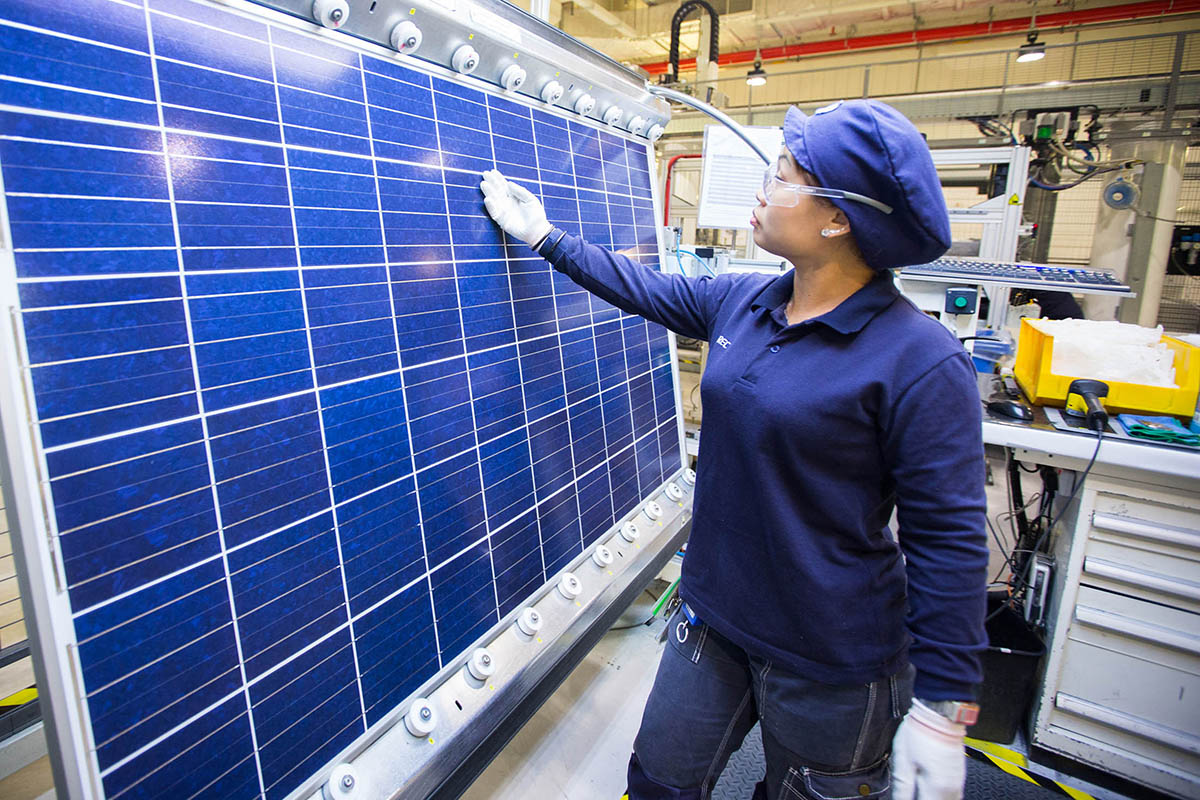Singapore plans to develop solar power and energy-storage technologies as the oil-trading hub of Asia pushes to generate more of its power from renewable sources.
The city-state is testing floating power projects in its reservoirs, a technology that could help solar meet as much as a quarter of electricity demand by 2025, Deputy Prime Minister Teo Chee Hean said Monday in a speech opening Singapore International Energy Week. The government also reached agreements for energy storage and micro-grid projects, Sim Ann, senior minister of state for trade and ministry, said at the event.
To reduce its reliance on fossil fuels, Singapore is trying to overcome natural limitations on hydropower and wind and a lack of available land for solar panels. While the city-state is a small emitter of carbon, it will be one of the first to feel the effects of climate change, Teo warned.
“We are one of the small island states, the average height above sea level is not a great deal,” Teo said. “If the sea levels rise, we have to take it very seriously, or all of us will have to take swimming very seriously.”
Singapore, which has long been one of the world’s largest oil refining and trading hubs, has shifted its electricity mix over the past century from coal to oil to natural gas, which now generates about 95 percent of Singapore’s eight gigawatts of power. Solar capacity has grown to a peak of 140 megawatts from about 0.4 megawatt in 2008, Sim said.
Floating Panels
The island nation can produce a peak of two gigawatts from solar by 2025, Teo said, citing a study by the Sustainable Energy Association of Singapore. Floating solar can help by creating extra surface space for photo-voltaic panels, Teo said. Tests done at Tengeh Reservoir have shown floating panels to be more efficient than rooftop, he said, adding that the country will also explore vertical solar panels on the sides of skyscrapers.
Singapore is pushing forward with plans to store intermittent solar energy, awarding deals to groups led by Red Dot Power and CW Group to install 4.4 megawatt-hours of storage solutions in two substation locations connected to the grid, Sim said. Singapore’s Energy Market Authority will also make it easier for consumers to generate solar power for themselves and to sell excess energy back to the grid, she said.
Singapore’s SP Group signed a memorandum of understanding with the Singapore Institute of Technology to develop the country’s first urban micro-grid at the institute’s future campus in Punggol. – Bloomberg
Recommended stories:
